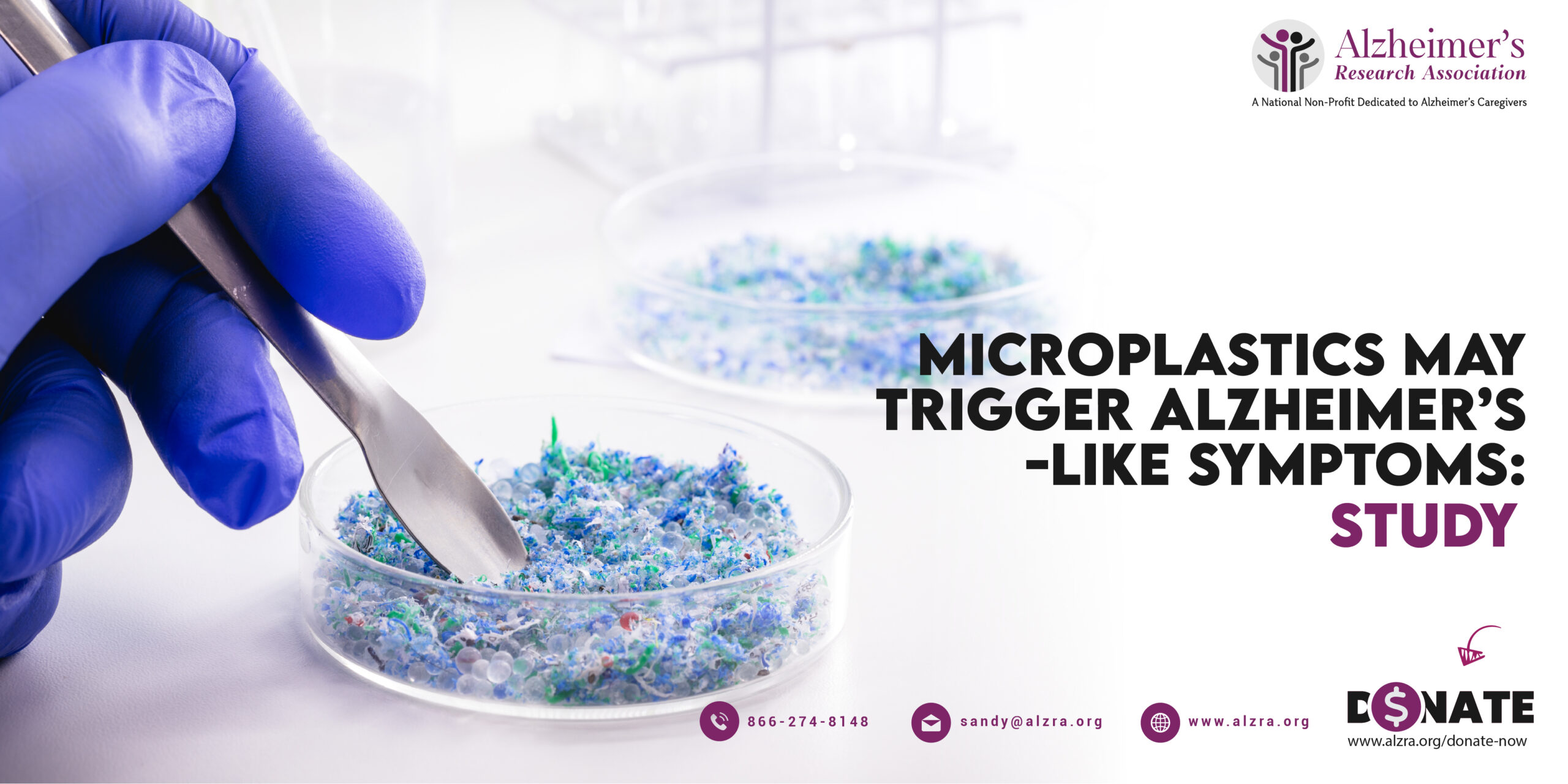
Researchers at the University of Rhode Island have found that consuming microplastics may cause cognitive deterioration in mice that are already genetically vulnerable to Alzheimer’s disease.
These days, the environment is full of tiny pieces of plastic called microplastics and nanoplastics that frequently enter our bodies via the food, drink, and even the air we breathe. These particles circulate in the body and reach regions like the brain, where they may accumulate and exacerbate diseases similar to Alzheimer’s disease, according to a recent study from the College of Pharmacy at the University of Rhode Island.
This study extends the previous research demonstrating that microplastics can cross the blood-brain barrier. The blood-brain barrier is the natural defense mechanism that typically protects the brain from harmful organisms, including bacteria and viruses [1].
Assistant Professor Jaime Ross expanded the study to see how these synthetic substances alter brain function. Findings from her recent research point to a possible link between memory loss and cognitive decline and the buildup of micro- and nanoplastics in the brain, especially in those with specific genetic risk factors for Alzheimer’s.
The journal Environmental Research Communications published the recent study [2].
The Study: Microplastic Exposure in Mice
The most recent study looked at mice that had been genetically modified to carry the naturally occurring gene APOE4, which is a powerful predictor of Alzheimer’s risk and increases a person’s risk of developing the disease by 3.5 times compared to those who carry the APOE3 variant of the gene.
According to Ross, there is no certainty that these mice, like humans, will show any cognitive changes. Identical twins can carry APOE4, one of whom may acquire Alzheimer’s disease while the other is completely cognitively healthy. That indicates that there is a lifestyle and environmental component at play. Diet, exercise, vitamins, and especially environmental pollutants such as microplastics are modifiable elements that research is focusing on in relation to Alzheimer’s. Does consuming an excessive amount of microplastics and having the APOE4 gene increase your risk of developing Alzheimer’s disease?
Ross and her colleagues tested this hypothesis by exposing two sets of mice, one with the APOE4 variation and the other with APOE3, to micro- and nanoplastics in their drinking water for three weeks. As anticipated, the microscopic particles of polystyrene, one of the most prevalent plastics in the world and present in Styrofoam takeout containers, plastic cups, and other items, entered the mice’s organs, including the brain. The study included a control group of people with each APOE designation who did not receive microplastic exposure.
To assess the mice’s cognitive abilities, the scientists next put them through a battery of tests. The first was an open-field test, in which a mouse is placed in a chamber and given 90 minutes to explore at will. A mouse will typically cling to the walls in an effort to conceal itself from possible predators. However, following their exposure to microplastics, the APOE4 mice-particularly the male mice-tended to spend more time in open areas and wander more in the center of the room, making them more susceptible to predators.
Behavioral and Memory Changes
To assess mice’s capacity for identifying novel items, the researchers placed them in an open chamber with two different objects. After allowing the mice to examine the objects, they were removed and later reintroduced, this time with one of the objects substituted with another shape.
Female mice exposed to APOE4 and microplastics were slow to detect novel objects, if at all, indicating cognitive impairment affecting memory.
According to Ross, males were resting and spending more time in the middle of the arena during the first test. The ability to recognize novel objects changed in females. In humans, men with Alzheimer’s typically exhibit more changes in apathy; they show less concern, whereas memory changes are more common in women.
Thus, it is rather obvious how memory and indifference are related: animals with the highest known risk factor for Alzheimer’s disease exhibit sex-dependent behavioral alterations when exposed to micro- and nanoplastics, which is comparable to the sex-dependent behavioral changes observed in Alzheimer’s patients.
Further Research is Required
Given that micro- and nanoplastics are among the most common environmental pollutants to which people are regularly exposed, the findings raise serious concerns that necessitate further research into the cognitive decline associated with exposure to these substances. A different study published earlier showed the levels of microplastics accumulated in the environment, and it was startling to discover that over 1,000 tons of microplastics were found in the top two inches of Narragansett Bay’s floor [3].
Ross is pursuing further research on the subject and encourages others to follow suit in the hopes of improving toxin regulation. According to her, the similarities observed in the mice and in the real world are intriguing. She continued that their goal is to promote more investigation into the issue of micro- and nanoplastics.
Alzheimer’s Research Association is a non-profit organization dedicated to helping caregivers of Alzheimer’s disease and dementia. We provide the latest information and news about the illness and helpful tips to help caregivers cope with their daily caregiving challenges. We realize the most important thing that a caregiver needs is financial assistance. Therefore, we provide grants to caregivers to ease their financial burden. Caregivers can apply for grants here: https://www.alzra.org/grant-applications/.
You can also help caregivers in their endeavor by donating as much as possible: https://www.alzra.org/donate-now/.
Rererenes
- Gaspar, L., Bartman, S., Coppotelli, G. and Ross, J.M., 2023. Acute exposure to microplastics induced changes in behavior and inflammation in young and old mice. International Journal of Molecular Sciences, 24(15), p.12308.
- Gaspar, L., Bartman, S., Tobias-Wallingford, H., Coppotelli, G. and Ross, J.M., 2025. Short-term exposure to polystyrene microplastics alters cognition, immune, and metabolic markers in an apolipoprotein E (APOE) genotype and sex-dependent manner. Environmental Research Communications, 7(8), p.085012.
- Fulfer, V.M. and Walsh, J.P., 2023. Extensive estuarine sedimentary storage of plastics from city to sea: Narragansett Bay, Rhode Island, USA. Scientific Reports, 13(1), p.10195.
- Microplastics May Trigger Alzheimer’s-Like Brain Damage. SciTech Daily. https://scitechdaily.com/microplastics-may-trigger-alzheimers-like-brain-damage/. Published Online: 17th September, 2025. Accessed: 15th October, 2025.
- URI study links microplastic exposure to Alzheimer’s disease in mice. Rhody Today. The University of Rhode Island. https://www.uri.edu/news/2025/09/uri-study-links-microplastic-exposure-to-alzheimers-disease-in-mice/. Published Online: 10th September, 2025. Accessed: 15th October, 2025.
- Nield, D. Microplastics Linked to Worsening Alzheimer’s Symptoms in Mice. Science Alert. https://www.sciencealert.com/microplastics-linked-to-worsening-alzheimers-symptoms-in-mice. Published Online: 20th September, 2025. Accessed: 15th October, 2025.


